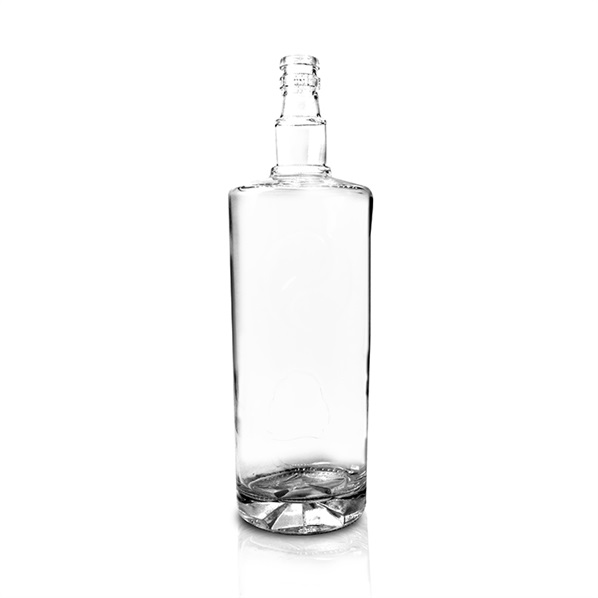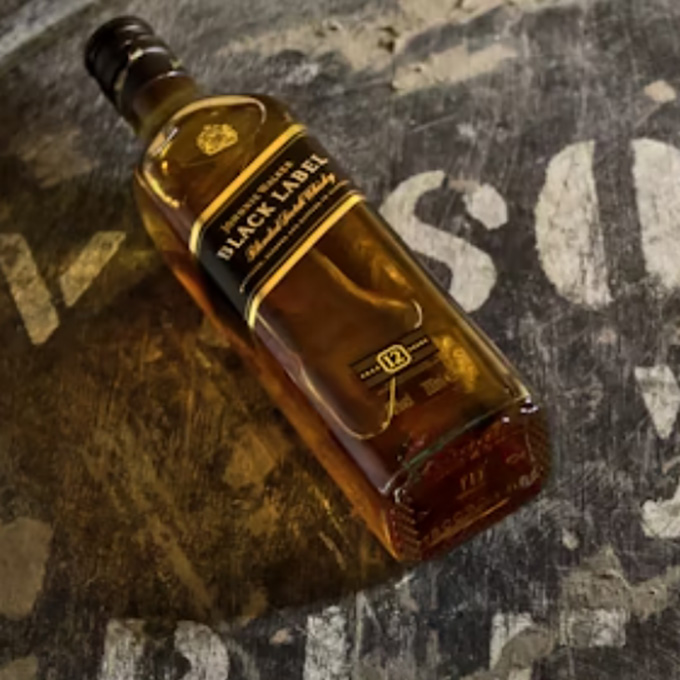Alright, so you're curious about sake? Maybe you tried it at a sushi spot, saw it on a menu, or a friend raved about it. But diving into a full-size bottle feels like a commitment, right? What if you don't like it? What if it's not your style? Enter the absolute game-changer for newbies: mini sake bottles. Think of them like sake flight tastings, but packaged for your convenience at home. This guide is your friendly intro to why these little guys are perfect for beginners and what you gotta know!
Why Mini Sake Bottles Are Your Best Sake Buddy (Seriously!)
Let's cut to the chase: mini sake bottles solve the biggest hurdles for beginners.
- Zero Commitment, Maximum Exploration: A standard sake bottle is usually 720ml (about 24 oz) – that's a lot! Mini sake bottles typically hold 180ml to 300ml (roughly 6-10 oz), perfect for one or two generous servings. Don't love that Junmai? No sweat, you're not stuck with it. Found a new favorite? Awesome, grab another mini or maybe step up to a bigger size! It takes the pressure off.
- Wallet-Friendly Fun: Sake quality varies wildly, and premium bottles can get pricey. Dropping $30-$50+ on a full bottle you might not enjoy? Ouch. Mini sake bottles let you sample higher-quality or more unique sakes for $5-$15 each. It's way easier on the budget while you figure out your palate.
- Convenience is King (or Queen): That big bottle? Once you open it, you ideally want to finish it within a week or two for peak freshness. Life happens! Mini sake bottles are single-serving heroes. Open one, enjoy it right then and there, no worries about preserving leftovers. Perfect for a quiet night in or testing a bottle before a dinner party.
- The Ultimate Discovery Tool: The sake world is VAST – Junmai, Ginjo, Daiginjo, Nigori, Nama, Yamahai, different rice strains, polishing ratios... it's easy to feel overwhelmed. Mini sake bottles are your passport. Grab a few different styles (maybe a dry Junmai, a fragrant Ginjo, and a creamy Nigori) and have your own tasting session. Compare them side-by-side. This hands-on experience is the fastest way to learn what "dry," "fruity," or "umami-rich" actually means in sake for you.

What's Inside Those Cute Little Bottles? Size & Style Matters
Okay, so you're sold on the idea of mini sake bottles. But what exactly are you getting?
- The Size Scoop: While not strictly standardized, most mini sake bottles fall into these ranges:180ml (6oz): The most common "single-serving" size. Think of it like a large glass of wine.200ml (6.7oz) & 300ml (10oz): Also popular, offering a slightly more generous pour or perfect for sharing a tasting between two people. You might even find tiny 100ml "taster" bottles sometimes!
- Beyond the Size: The Sake Inside: This is where the magic happens! Mini sake bottles aren't just about small size; they showcase the diversity of sake:Core Styles: Look for minis of Junmai (pure rice, robust), Honjozo (slightly lighter with a touch of brewer's alcohol), Ginjo (fragrant, fruity), Daiginjo (ultra-premium, delicate). Trying these minis side-by-side is an education!Fun Variations: This is where mini sake bottles shine for exploration! Seek out:Nigori: That lovely unfiltered, cloudy, often sweeter sake.Nama: Unpasteurized sake – super fresh and vibrant, but check the date (it's perishable!).Sparkling Sake: Yes, it exists, and it's deliciously fun! Often comes in smaller bottles anyway.Aged Sake (Koshu): Rarer in minis, but a fascinating glimpse into a different sake dimension.Flavored Sake (Yuzu, Ume/Plum, etc.): Great dessert or aperitif options often found in small formats.
- Quality Check: Don't assume minis are lower quality! Reputable breweries often bottle their premium lines in mini sake bottles specifically for tasting and accessibility. Check the label for the brewery name, sake classification (Junmai, Ginjo, etc.), and the rice polishing ratio (e.g., 60%) if listed – just like you would on a big bottle.
Where to Find These Mini Treasures (Hint: Easier Than You Think!)
Gone are the days of only finding mini sake bottles in specialty shops (though those are great!). Here's where to look across the US:
- Your Local Liquor Store (Especially Larger Ones): Chains like Total Wine & More, BevMo!, and well-stocked independent stores often have dedicated sake sections. Look closely! Mini sake bottles are sometimes displayed near the register, in special sake tasting sets, or nestled among the larger bottles. Don't hesitate to ask an employee – they might have more in the back.
- Asian Grocery Stores: Goldmines! Stores like H Mart, Mitsuwa Marketplace, 99 Ranch Market, or smaller local Asian markets usually have extensive sake selections. Mini sake bottles are very common here, often at great prices. Explore the refrigerated section too for Namazake (unpasteurized) minis.
- Online Sake Retailers: Websites like Tippsy Sake, Sake Social, UrbanSake, and even Amazon (check sellers carefully) offer fantastic selections of mini sake bottles, often curated into tasting sets ("Explore Junmai," "Ginjo Flight"). This is fantastic for accessing breweries not distributed locally. Check shipping regulations for your state.
- Higher-End Grocers: Places like Whole Foods or Wegmans in areas with diverse food interests might carry a selection of mini sake bottles, often near the wine or specialty beverages.
- Restaurants & Sushi Bars: While you can't usually buy them retail there, notice if they offer sake by the glass or small carafe. It's a sign they likely use mini sake bottles behind the bar, reinforcing their popularity for single servings!
Okay, You've Got Your Mini Bottle! Now What? Serving 101
You snagged a few mini sake bottles – awesome! Let's make sure you enjoy them right:
- Temperature Talk: This is KEY to unlocking flavor!Room Temperature (Hiya): Often great for aromatic Ginjo/Daiginjo. Pull the mini out of the fridge 15-20 mins before serving.Chilled (Reishu): The most common way, especially for Ginjo, Daiginjo, and lighter styles. Pop it in the fridge for a few hours. Mini sake bottles chill down super fast!Warmed (Atsukan/Kan): Best for robust Junmai or Honjozo. Don't boil it! Gently warm in a pan of hot water (like a bain-marie) or use a microwave very carefully in short bursts (10-15 seconds). Test frequently – overheated sake tastes harsh. Your little bottle warms quickly!Pro-Tip: Try the same mini sake bottle at different temps! It can be a revelation.
- The Perfect Pour:Glassware: While traditional ochoko (small cups) or guinomi (larger cups) are lovely, you absolutely don't need them. A white wine glass is fantastic – it concentrates the aromas. A small rocks glass works too. Avoid thick ceramic mugs that hide the scent.Pouring Etiquette (Simple Version): Pour for others if you're sharing, and let them pour for you. Hold the mini sake bottle with two hands as a polite gesture when pouring for someone else. Don't fill your own cup if you can avoid it! But honestly, at home solo? Just pour and enjoy.
- Storing Leftovers? (Rare with Minis!): One of the best things about mini sake bottles is the "open and finish" ease. But if you must save half:Recork or cap tightly IMMEDIATELY.Store in the fridge.Consume within 1-3 days (fragrant styles fade fastest; robust Junmai lasts a bit longer). Oxidation is sake's enemy. Seriously, just finish it!
Pairing Your Mini Sake Bottle Adventure with Food
Part of the fun is matching your mini sake bottles with grub! Sake is incredibly food-friendly, often more versatile than wine.
- Dry & Crisp (Many Honjozo, some Junmai/Ginjo): Think sushi, sashimi, oysters, light salads, grilled chicken, mild cheeses (goat cheese!). Cuts through fat beautifully.
- Fruity & Fragrant (Ginjo, Daiginjo): Amazing with slightly richer fish (salmon, black cod), dishes with citrus or herbal notes, vegetable tempura, creamy pasta (without heavy tomato sauce), or even just by itself as an aperitif.
- Rich & Umami (Robust Junmai, Yamahai, Kimoto): Stands up to grilled meats (steak, yakitori), mushrooms, stews, aged cheeses (cheddar, gouda), miso-based dishes, even pizza or burgers!
- Sweet & Creamy (Nigori): Pairs wonderfully with spicy food (Thai, Indian curry), rich desserts (cheesecake, fruit tarts), fried foods, or blue cheese. Also a great dessert on its own.
- Sparkling Sake: Perfect as a celebratory drink, with appetizers, brunch, or light seafood. Think oysters, smoked salmon, fruit.

Beyond the First Sip: Embracing the Mini Sake Journey
Starting with mini sake bottles isn't just practical; it's the smartest way to build your sake confidence and knowledge. Remember:
- Take Notes (Mental or Actual): What do you smell? Taste? (Fruit? Flowers? Rice? Mushrooms? Alcohol heat?) Do you like it? Why or why not? Comparing minis side-by-side makes these differences pop.
- Don't Sweat the "Right" Way: Forget intimidating rules at first. The best sake is the sake you enjoy, served how you like it. Warm a Ginjo if you want! Chill a Junmai! The mini sake bottle gives you freedom to experiment without consequence.
- Talk to People: Ask staff at stores for recommendations on mini sake bottles. Chat with friends about what you're tasting. Join online sake communities (Reddit's r/Sake is friendly!). The sake world is welcoming.
- Appreciate the Craft: Each mini sake bottle represents centuries of tradition, skilled brewers, specific rice, pure water, and meticulous process. It's more than just rice wine; it's a crafted beverage with incredible depth.
The Mini Bottle, Mighty Advantage
So, there you have it! Diving into the world of sake doesn't require a leap of faith into a big, expensive bottle. Mini sake bottles are your perfect training wheels, your affordable tasting flight, your zero-risk exploration kit. They take the intimidation factor out of sake and replace it with pure discovery and enjoyment. You get to taste diverse styles, figure out your preferences, learn about temperature impacts, and pair with food – all without breaking the bank or worrying about waste.
Next time you're curious about sake, skip the intimidating big bottle aisle. Head straight for the charming little guys – the mini sake bottles. Grab a few different ones, chill them down (or warm one up!), pour a glass, and start your delicious, approachable sake adventure. Kampai (Cheers) to your first sip! You've got this.

